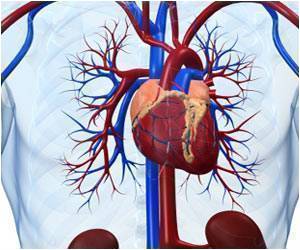The lower costs of the wrist approach largely are due to the fact that patients experience fewer complications and can be discharged earlier.

‘Hospitals can improve patient care and reduce costs associated with coronary angioplasty if cardiologists perform more of these procedures through an artery in the wrist and if they take steps to discharge such patients on the same day.’





Interventional cardiologists insert a
small tube into an artery in the wrist or the groin, which can be used
to view the narrowed heart artery, deliver an inflatable balloon to open
up the narrowed section, and possibly deliver a stent to hold the
vessel open.Hospitals can improve patient care and reduce costs associated with coronary angioplasty if cardiologists perform more of these procedures through an artery in the wrist and if they take steps to discharge such patients on the same day, revealed a new study led by Washington University School of Medicine in St. Louis.
The research, published in JACC: Cardiovascular Interventions, suggests that the lower costs of the wrist approach largely are due to the fact that patients experience fewer complications and can be discharged earlier, compared with procedures that access the heart through the larger, deeper artery in the groin. The researchers estimated that shifting standard practice by 30% to the wrist approach, along with same-day discharge, could save the United States $300 million per year.
"We have unequivocal evidence and data that show better outcomes when we access the heart's coronary arteries and perform angioplasty through a blood vessel in the wrist rather than through the femoral artery in the groin," said first author Amit P. Amin, an assistant professor of medicine. "The femoral artery is the traditional route, but when we go in through a vessel in the wrist, we see less bleeding, fewer complications, less pain and discomfort, higher patient satisfaction, shorter hospital stays, and lower costs."
Using the National Cardiovascular Data Registry CathPCI Registry, the researchers analyzed data from almost 280,000 Medicare patients who underwent PCI and were eligible for same-day discharge. Despite the fact that all of these patients were capable of leaving the hospital the same day as their procedures, only about 5% of these patients actually were discharged without having stayed overnight.
Advertisement
The analysis demonstrated an average cost of $13,389 for the wrist approach with same-day discharge, compared with $17,076 for the groin approach with at least one night of hospitalization, resulting in a cost savings of about $3,700 for outpatients who get the wrist-access procedure. Independent of the length of stay, the wrist approach costs about $900 less than the groin approach, on average.
Advertisement
Of the study's patient population receiving PCI, 9% received the procedure in which doctors used wrist access. According to Amin, improved technology has allowed wrist access to become a viable route to the coronary arteries, even for complex cases, and should be considered for more patients.
"The traditional way has been to go through the bigger femoral artery that is a straight pathway to the heart," Amin said. "Unfortunately, that artery is also deep. It's associated with more bleeding complications. In contrast, the wrist artery is small and is associated with fewer complications. The minor challenge is in the difficulty of navigating a smaller, more twisting path of an artery through the wrist. But with advances we have in technology and equipment, those challenges are rapidly decreasing."
Source-Eurekalert












